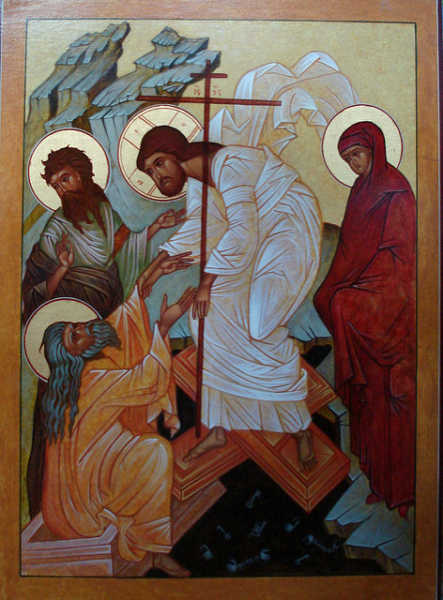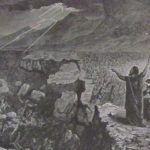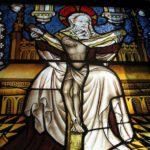We run our website the way we wished the whole internet worked: we provide high quality original content with no ads. We are funded solely by your direct support. Please consider supporting this project.

The God Who Stoops
The way that one imagines God can be thought of along the lines of a Rorschach test. That is, I submit that the way a person imagines and experiences God says at least as much about that person as it does God. The more estranged people are from God, the more their knowledge of him is obstructed and distorted. And when people yield to the Spirit, they are empowered to discern the true glory of God “in the face of Jesus Christ.”
That being said, the standard that must function as the ultimate criteria by which we assess the extent to which any conception and experience of God is accurate or inaccurate is the revelation of God in the crucified Christ.
Hence, on the one hand, to the extent that any conception and experience of God conforms to the character of God revealed on the cross, we may conclude that the Spirit has managed to break through the limited and fallen hearts and minds of people. On the other hand, to the extent that any conception or experience fails to conform to this character, we must conclude that the limited and fallen hearts and minds of people have resisted the Spirit.
Given Scripture’s repeated teaching that the people God claimed for himself in the OT were a “stiff-necked” people who continually resisted the Spirit, we ought not be surprised to discover that their conceptions and experiences of God were sometimes distorted. To the contrary, I believe we ought to rather be impressed by how frequently the Spirit succeeded in breaking through to disclose beautiful portraits of God that reflect his true character.
Knowing what we now know about God through his self-revelation on Calvary, we ought to be able to discern the true character of God in the depths of even the most seriously distorted portraits of God in the OT. For when we view them through the lens of the cross, we can see that there is something going on beneath the surface. We can discern in their depth the same humble God of self-sacrificial love stooping to bear the sin of his people that we discern on the cross.
In the OT, we can see God working within his people’s faulty Rorschach-like conceptions and experiences of him. God was bearing the sinful perspectives of his covenant people, including the horrifically violent concepts they had of him. He was accommodating the hard-heartedness of his people, stooping to their level to move his people in the right direction. The fact that God was willing to stoop in this fashion and bear the sin of his people reveals God’s true character, anticipating the revelation of God ultimately revealed on the cross.
Photo credit: jimforest via Visualhunt.com / CC BY-NC-ND
Category: General
Tags: Bible Interpretation, Cruciform Theology
Topics: Interpreting Violent Pictures and Troubling Behaviors
Related Reading

Four Principles of the Cruciform Thesis
In the second volume of Crucifixion of the Warrior God, I introduce how four dimensions of the revelation of God on the cross (as introduced in this post) lead to four principles that show us how to unlock aspects of the OT’s violent divine portraits and thus disclose how a given portrait bears witness to…

Podcast: What is ‘Deep Literalism’?
Greg discusses different levels of literalism and does a darn good impersonation of Garth Brooks. http://traffic.libsyn.com/askgregboyd/Episode_0214.mp3

It’s All About the Crucified Christ
The world was created by Christ and for Christ (Col 1:16). At the center of God’s purpose for creation is his plan to unite himself to us in Christ, reveal himself to us through Christ, and share his life with us by incorporating us into Christ. We don’t know what this might have looked like…

Did the Father Suffer on the Cross?
When I argue that the cross is a Trinitarian event (See post), some may suspect that I am espousing Patripassionism, which was a second and third century teaching that held that God the Father suffered on the cross. While this view was often expressed as a form of heretical Modalism, and while the Patristic fathers…

Podcast: What Do We Do When the Bible Sends Mixed Messages?
Greg considers how to interpret mixed commands in the Bible—where one verse advises differently than another. http://traffic.libsyn.com/askgregboyd/Episode_0364.mp3

Getting Honest about the Dark Side of the Bible
Eddy Van 3000 via Compfight While most of the Bible exhibits a “God-breathed” quality, reflecting a magnificently beautiful God that is consistent with God’s definitive revelation on the cross, we must honestly acknowledge that some depictions of God in Scripture are simply horrific. They are included in what is sometimes called “the dark side of…
